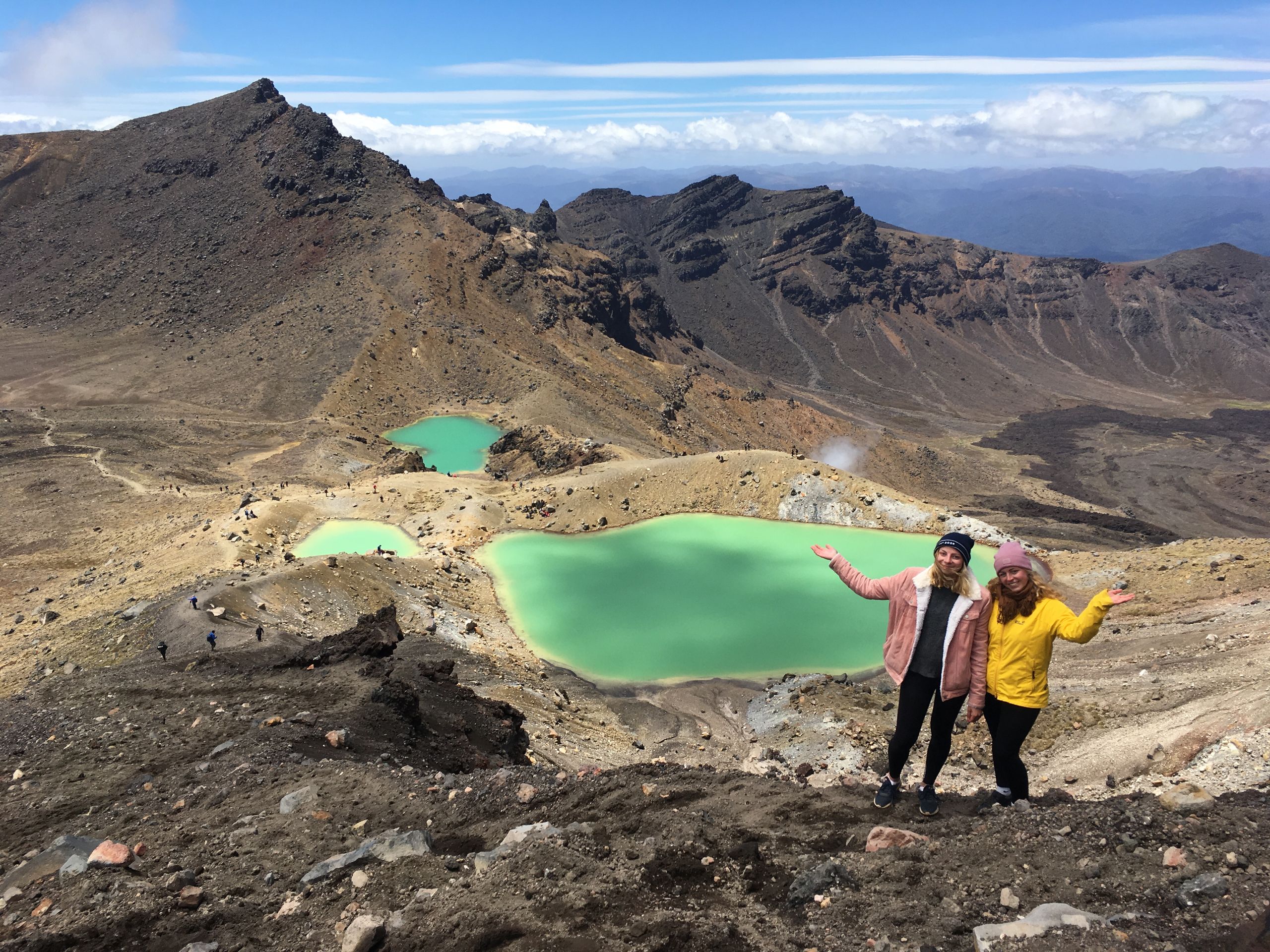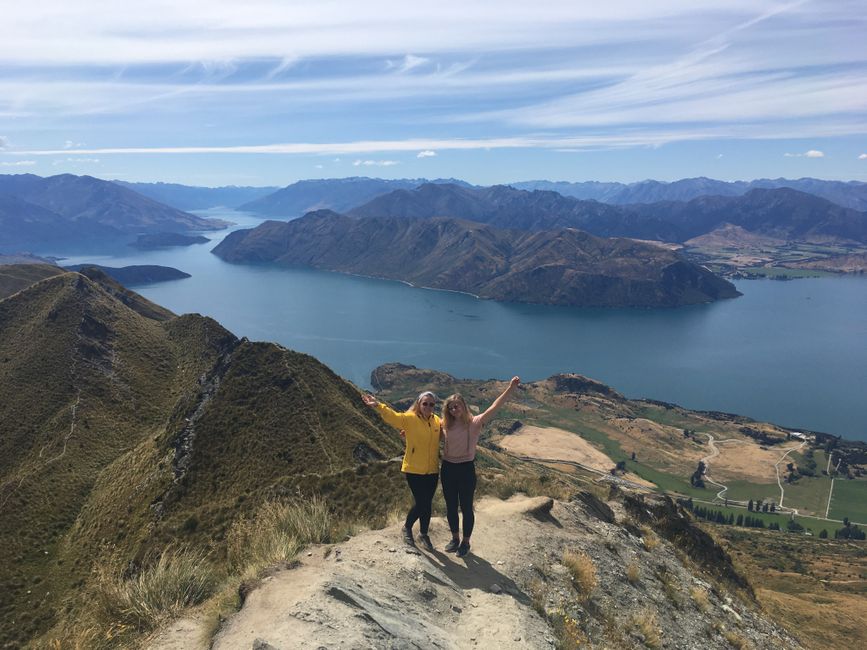#Info section 10: Travel- Places on the North Island Part 2
نشرت: 10.08.2020
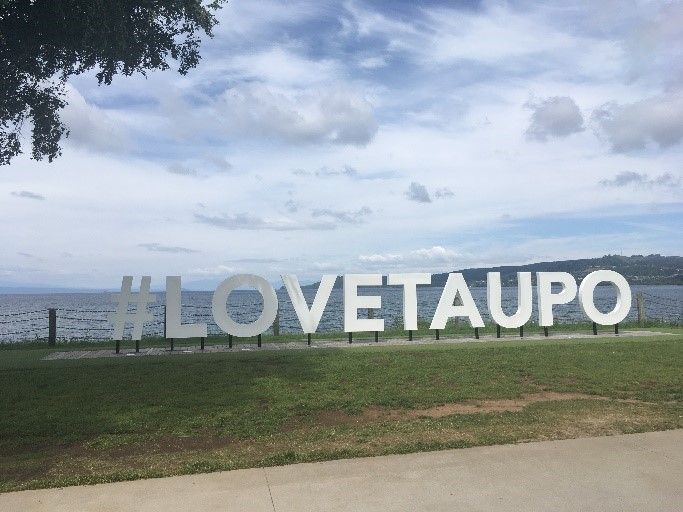
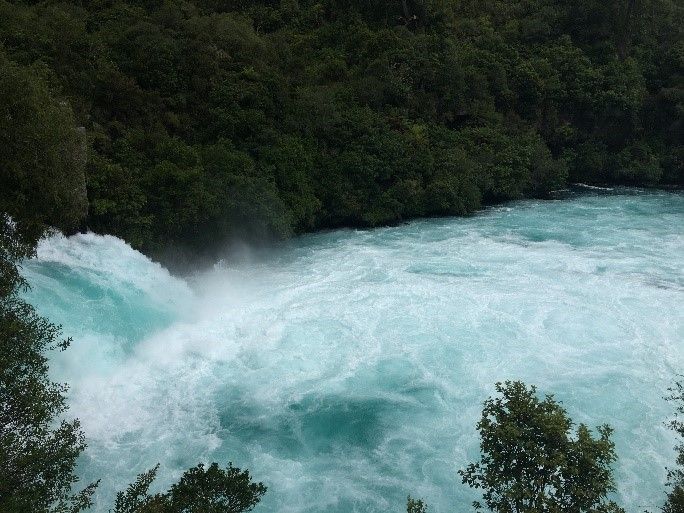
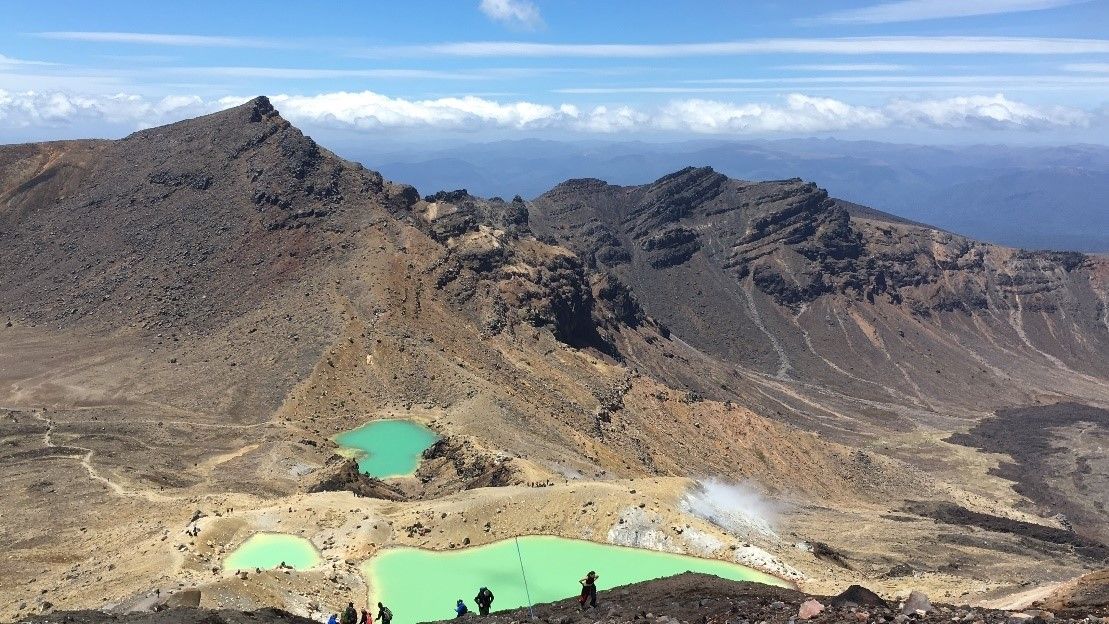
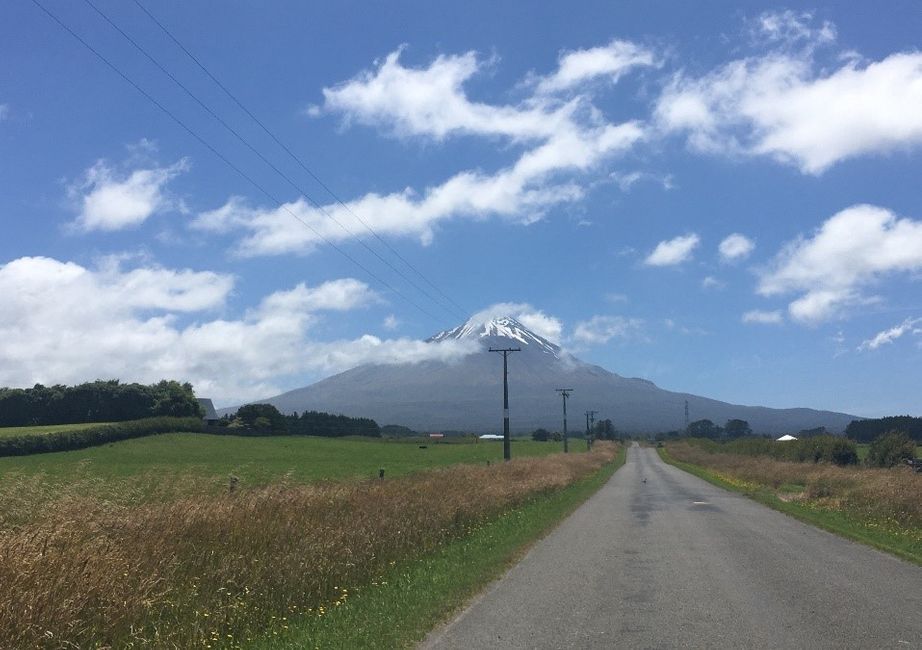
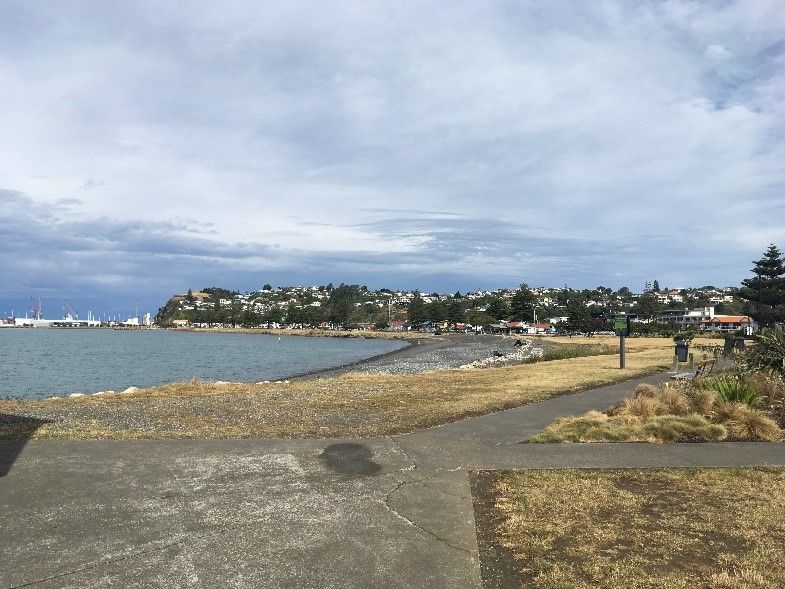
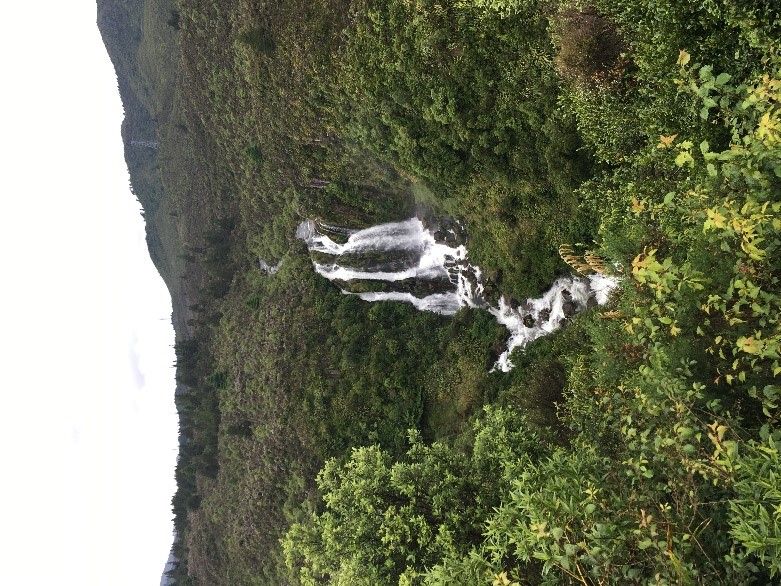
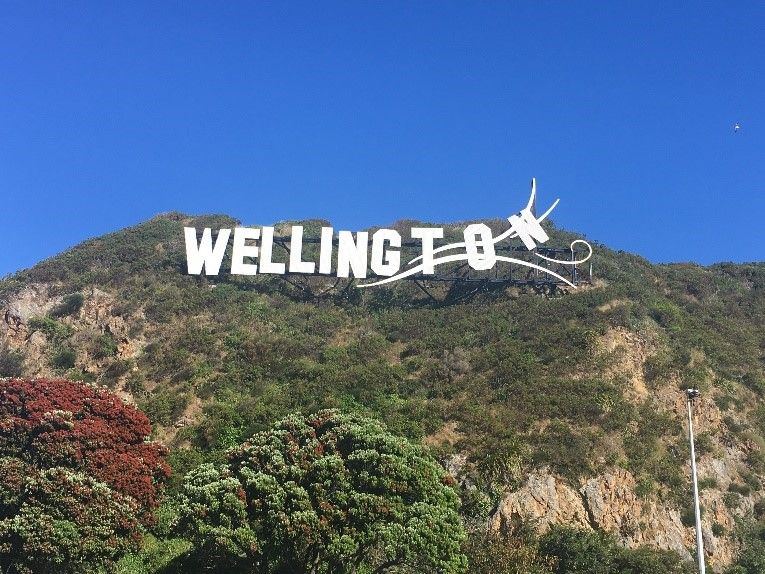
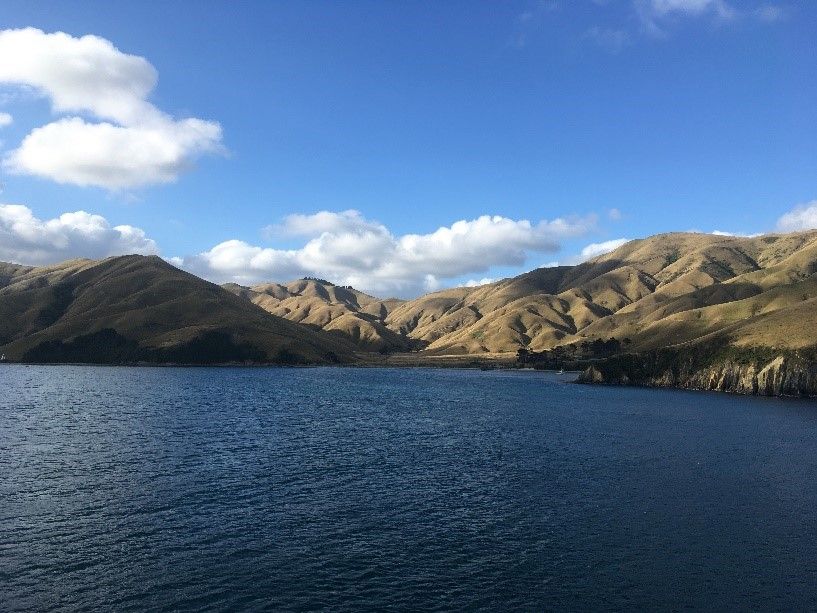
Taupo & the Huka Falls:
Taupo is a lovely little town, which mainly has a special location. Not far from Rotorua and Wai-O-Tapu, the city is located in the center of the North Island, right on the shores of Lake Taupo, the largest lake in New Zealand.
A mainstream attraction near Taupo are the Huka Falls, which are not any less worth seeing. They are easily accessible by car and completely free (except for the toilet). The turquoise Huka Falls are so special because the flow of the waterfall is extremely powerful. If you want to get a closer look at the Huka Falls, you can book a tour with a jet boat, which is a bit more expensive.
Taupo is also very popular with adrenaline junkies. The activities range from jet boating to parasailing and tandem jumps. If you enter Taupo from the direction of the waterfalls, you should stop at the Taupo Lookout, which offers a beautiful view of the city and the lake. On a clear day, you can see the snow-covered peaks and volcanoes of Tongariro National Park in the background.
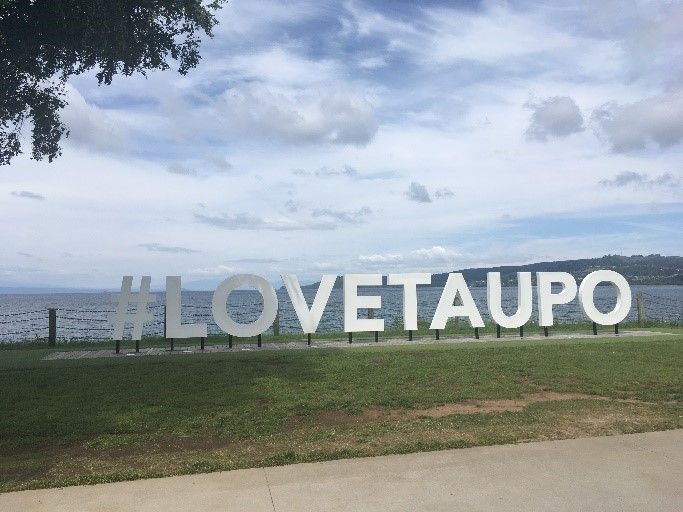

Tongariro:
The absolute highlight of our time in New Zealand was definitely the Tongariro Alpine Crossing! Around 700 people embark on this journey every day during the summer months to experience the most popular hiking trail in New Zealand. The view of the Red Crater, the Emerald Lakes, and the surrounding mountains is simply breathtaking.
Before you tackle the Tongariro, there are a few things you should keep in mind to ensure a successful hike. Here's everything we wished we had known beforehand:
Tongariro is located in Tongariro National Park, which is, as the name suggests, a national park.
The area is naturally quite remote, but the landscape is all the more beautiful. If you decide to do the hike, it's best to stay in one of the small nearby towns, such as National Park Village. You should stock up on food supplies in the last major town called Turangi before entering the national park.
Also, it is not allowed to drive to the Tongariro car park on your own. We definitely recommend not trying it anyway, but simply booking a shuttle. This way, there will still be someone who knows that you are on your way in case of emergency. It's best to book in advance online: We booked with https://tongarirocrossingshuttles.co.nz at that time. The cost is $40 per person, but it can be more expensive if you choose to be picked up from a more distant location. There, you can choose where you want to be picked up from and where you want to be dropped off, as well as the starting time. The available pick-up locations usually include the larger accommodations or campsites in the nearby towns. We were picked up at a bus stop in National Park Village, which was within walking distance from our campsite.
The 19.4-kilometer long trail is said to take 6.5 hours. Of course, this strongly depends on the hiker's condition. Realistically, you should plan for 7 to 8 hours. Depending on how fit you feel, you should also decide when you want to start in the morning. Since we are not experienced hikers at all, we took the earliest shuttle at 6 a.m., which was the right decision for us. The last shuttle usually leaves at 5:30 p.m.
The weather should also be monitored before the hike. It often rains at Tongariro, and if it gets too windy or rainy, the shuttles quickly stop running. Regardless of the season, temperatures can drop below freezing at an altitude of 1886 meters. Therefore, in addition to sufficient food and water bottles, you should definitely have warm clothing, including a scarf, beanie, and especially sturdy shoes. No shorts or flip-flops! As soon as you ascend, you have to be prepared for icy winds...
Since it was very windy for us, we were only able to walk half of the trail instead of the whole way. So, we had to decide at which point to turn back (which is why we went to the Emerald Lakes and back). The first part of the trail was quite relaxed and led along well-developed, almost level paths. In the second section, we started to climb a bit higher and gradually had to overcome some decent stairs. After just 2 kilometers, you're already almost 500 vertical meters above the starting point. But the third part really put us to the test: the ascent to the Red Crater. This section requires climbing, saying goodbye to stairs and proper paths. Once we reached the highest point, however, we could easily forgive the hardships of the hike. At the crater, you should have an impressive view of the Emerald Lakes and the Blue Lake if the weather is good.
Even though the Tongariro Alpine Crossing can be accomplished by amateur hikers, you should not underestimate it. Although we were prepared for a tough, long hike, the reality was still a bit more intense. Nevertheless, we would never trade our memories of Tongariro. Tongariro is truly incomparable and definitely one of the places in New Zealand whose beauty is indescribable. An unforgettable highlight!
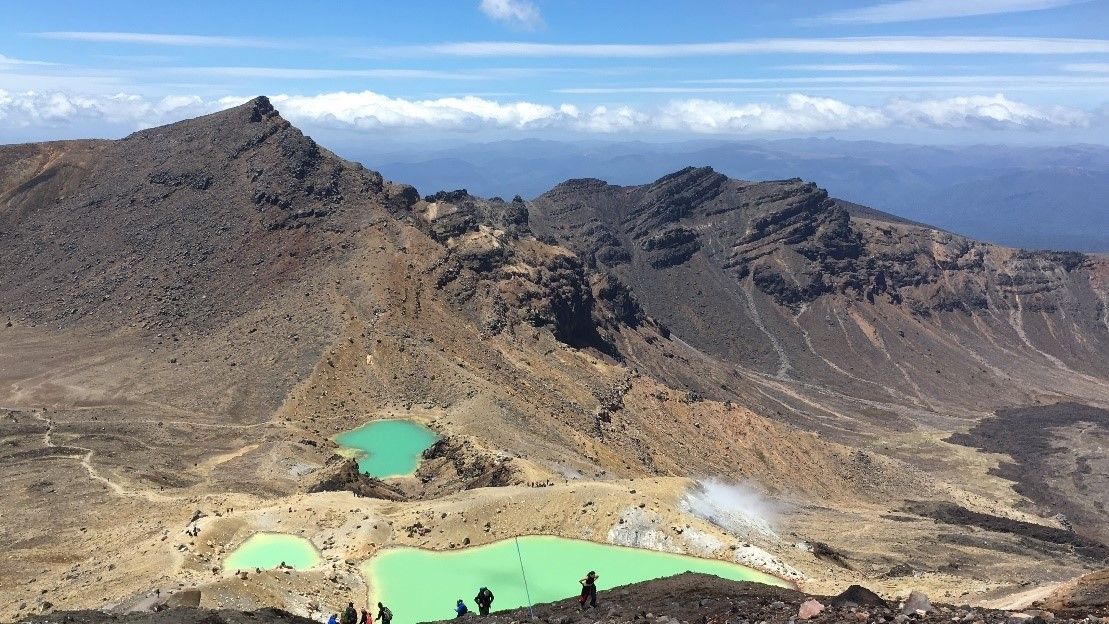
Mount Taranaki:
Mount Taranaki is definitely one of the most shy mountains in the world. We spent almost a whole week in the region, but there were only 2-3 brief moments when we had a relatively good view of it. Most of the time, the snow-covered peak was obscured by clouds. You definitely need a lot of patience and luck to see it in all its glory. Nevertheless, the area around this freestanding, perfectly symmetrical volcano is quite special.
To get the best view and the famous influencer photo on the road, we recommend the view from the Forgotten World Highway. It is located on the eastern side of the volcano, which is also the most beautiful to look at.
The largest city in the area is New Plymouth, which is located north of Mount Taranaki and is particularly popular with surfers. If you visit during the period from December to early February, you should not miss the Festival of Lights in New Plymouth! It takes place every evening and illuminates the entire Pukekura Park. But even otherwise, the Botanic Gardens are really worth a visit, and all of this is completely free!
To get as close as possible to Taranaki, you can visit the Egmont National Park, the rainforest-like ring that completely surrounds Mount Taranaki and separates it from the surrounding landscape. This national park is best reached by car from the Dawson Falls, where, among other things, a short hiking trail leads. There are opportunities to start short or long hiking trails from there. By the way, it is estimated that it takes more than a day to reach the summit of Mount Taranaki and requires quite a lot. Inexperienced hikers should therefore not attempt this trail. But the best way to admire Taranaki is from below anyway!
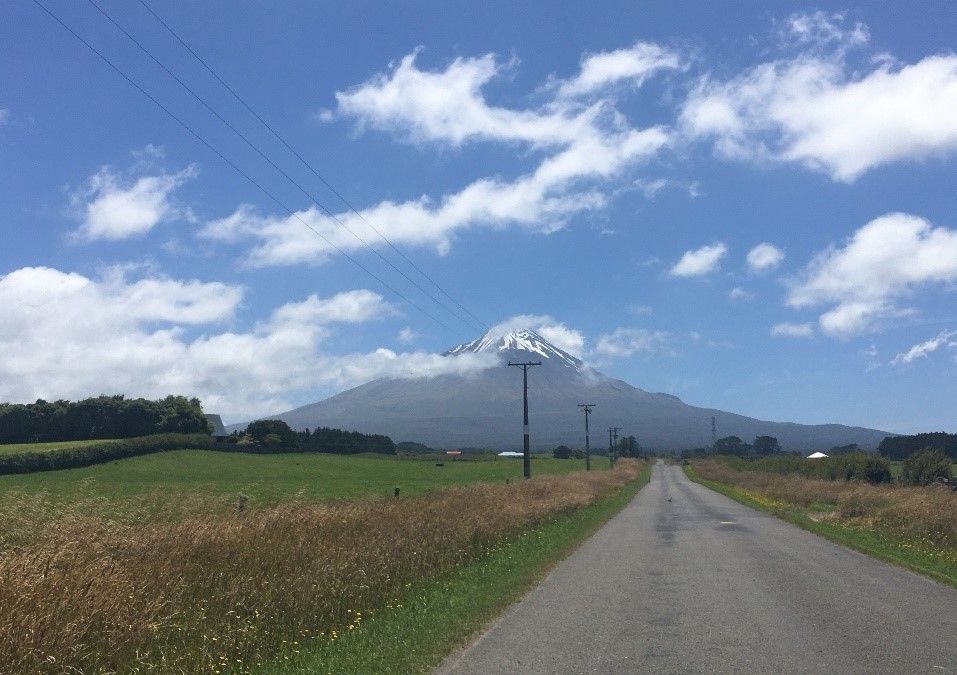
Napier:
In Napier, you will immediately feel like you're on vacation. This coastal town has beautiful parks, a lot of buildings and streets in Art Deco style. If you want to see Napier from above, you should visit the Bluff Hill Lookout, which is easily accessible by car. In Napier, you will also find the popular National Aquarium of New Zealand, which you can visit for $23 per person. When we arrived, we were also lucky enough to see dolphins when we stopped at a parking lot by the bay. This special city is beautifully laid out and definitely worth a short trip.
Tip: If you leave or enter Napier in the direction of Taupo, you can make a short stop at the Waipunga Falls. They are located about halfway between the two cities and are signposted on the highway. From the small parking lot, you have a good view of the large waterfalls, which we still find the coolest of all the ones we've seen.
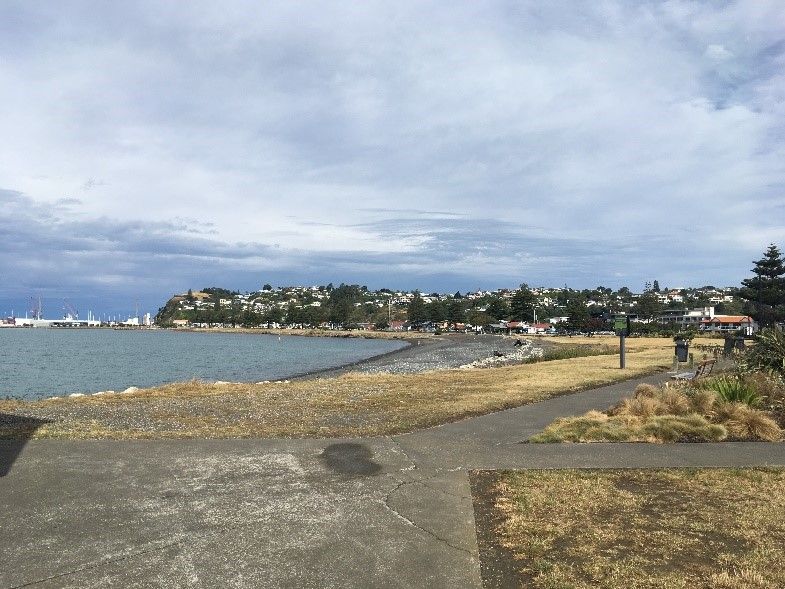
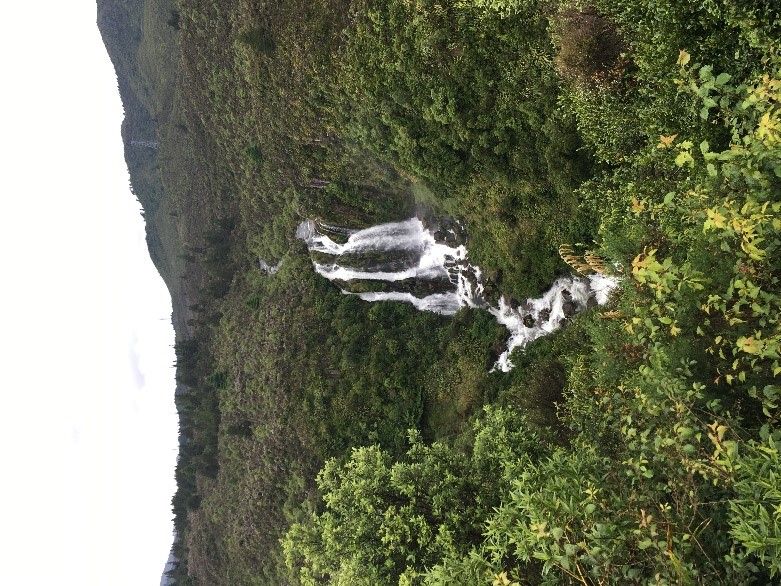
Wellington:
There's no way around Wellington, not only because of its location as the gateway to the South Island. Although New Zealand's capital has just over 200,000 inhabitants, it brings back a bit of the big city feeling after Auckland. The most famous shopping and shopping streets in the city center are Cuba Street and, for those who like it bigger, Lambton Quay.
For $5, you can take a simple, about 5-minute ride on the Cable Car Lane up to the Botanic Gardens, enjoy the view of Wellington, and then stroll back to the city through the park.
Not far from the city center is Te Papa Museum, the national museum, which you should also not miss. It's free, nicely designed, and offers a lot of information about New Zealand and its history.
However, the best view of the harbor, the city center, and the sea of houses on the surrounding hills can be enjoyed from Mount Victoria. You can reach it either on foot or by car. However, if you go on foot, you have the chance to see a filming location of the "Lord of the Rings" trilogy: the wooded slopes of the mountain were used for the Hobbiton Forest where the hobbits flee from the black riders in the first part.
If you want to learn more about film productions like the "Lord of the Rings" or "Hobbit" movies, you can take a trip to the Weta Cave. Props and figures are produced there, and for $28 per person, you get a guided tour of the entire workshop.
On the other side of the harbor, you can see the Wellington Sign, the famous lettering on the hills of the second film city in the world ;) The nickname "Windy Welly" is not for nothing. It's always windy in Wellington, so it's better not to wear dresses or hats.
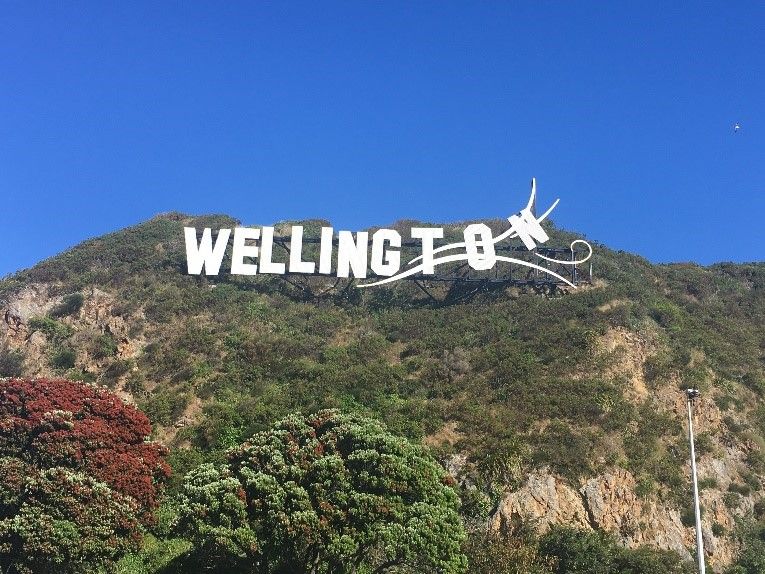
The Ferry:
The journey with the Cook Strait Ferry is definitely a highlight of any stay in New Zealand. During the 3-hour trip to the South Island, it's worth looking outside. Don't miss the ride through the beautiful Queen Charlotte Sound!
The ferry operates several times a day between Wellington and Picton. As "New Year, new island" is a popular motto among tourists in New Zealand, you should book the crossing a few weeks in advance if you plan to change islands in January. Normally, however, you can get tickets for the crossing quite spontaneously.
You have the choice between Bluebridge and Interislander. Interislander offers more crossings per day, while Bluebridge is supposed to be slightly cheaper. The prices vary depending on the number of people and the size of the car. But you can expect to pay about $60 per person. As far as we can tell, both ferries are quite similar. It's best to choose the ferry whose departure times best suit your plans.
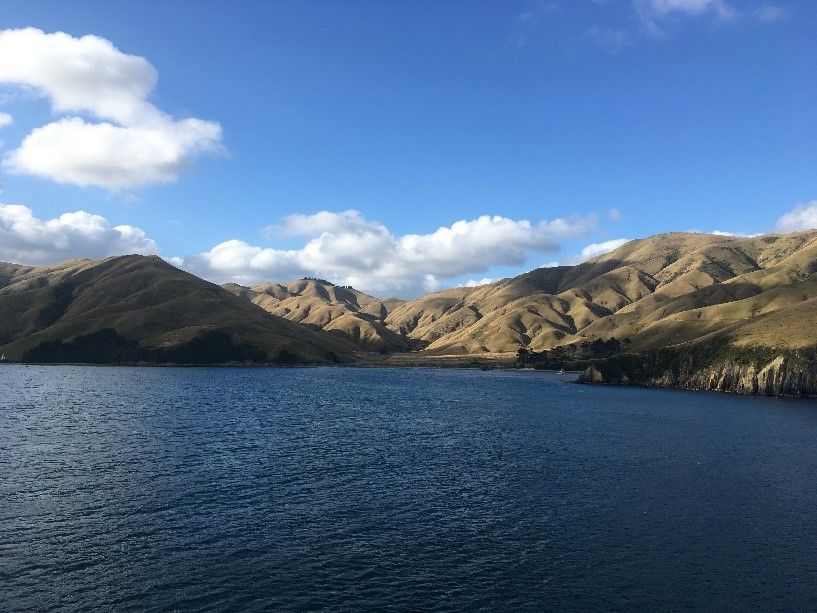
إجابة
